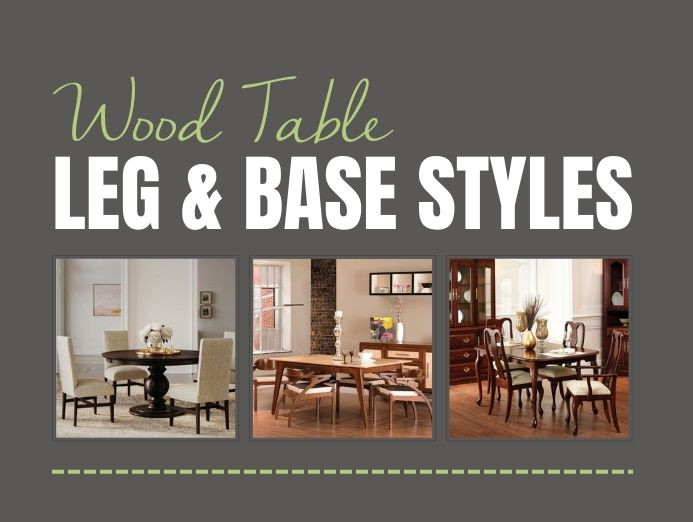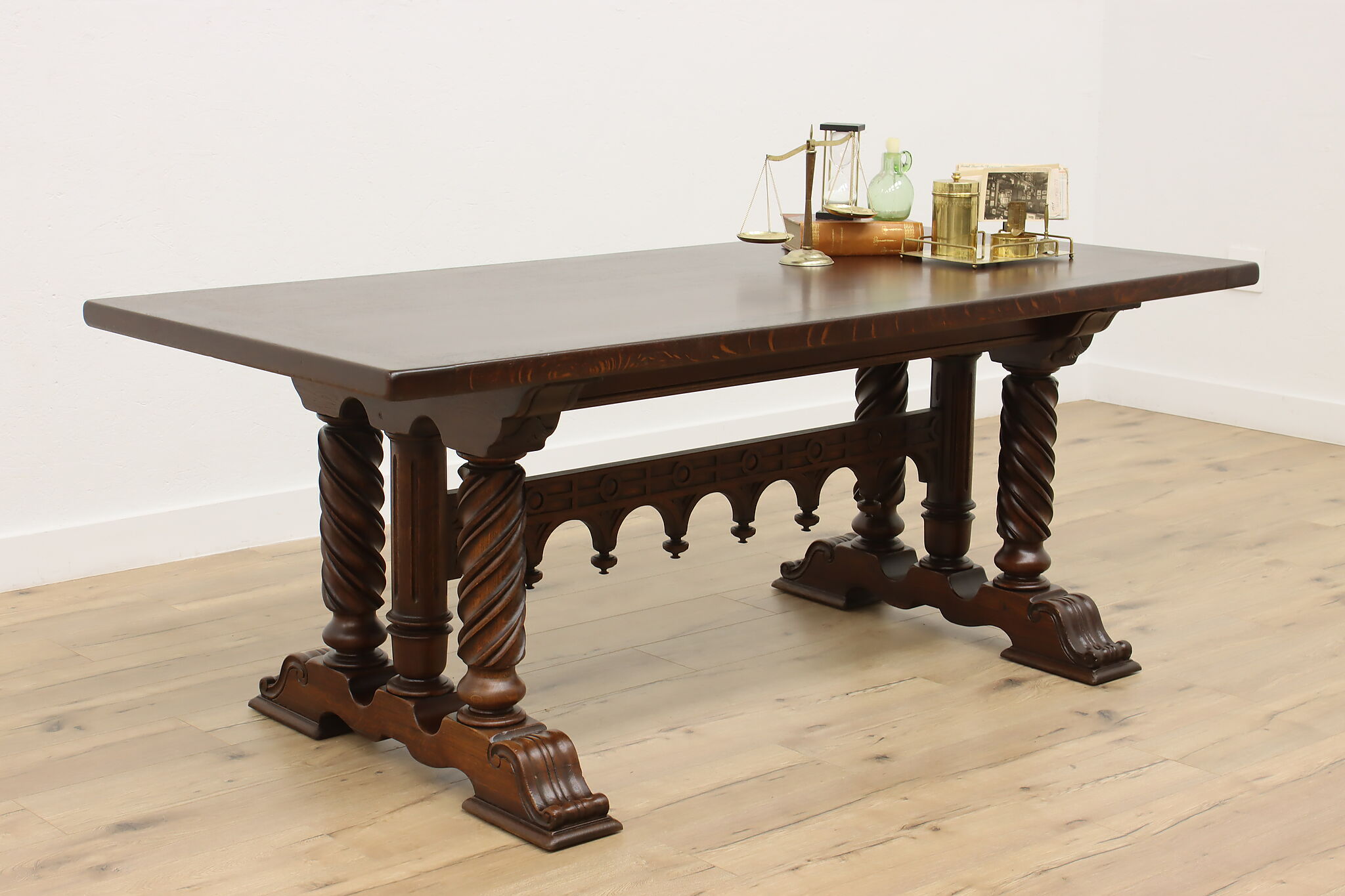How Dining Room Table Legs Can Change the Entire Aesthetic of Your Room
How Dining Room Table Legs Can Change the Entire Aesthetic of Your Room
Blog Article
From Traditional to Modern: Locate the Suitable Eating Area Table Legs for Your Style
While timeless styles such as cabriole and transformed legs stimulate a feeling of classic elegance, contemporary styles like barrette and geometric alternatives provide a chance for striking aesthetic interest. As you take into consideration these elements, the question continues to be: exactly how can you seamlessly integrate these diverse leg designs to develop an unified eating experience?
Recognizing Table Leg Styles
The selection of dining-room table leg styles can considerably influence both the aesthetic appeals and performance of the room. Each leg style adds one-of-a-kind aesthetic components and functional features, satisfying diverse layout choices and usage requirements. Recognizing these designs is critical for choosing the best table that lines up with your total indoor layout vision.
As an example, tapered legs offer a tidy, traditional look that can enhance an area's sophistication, while pedestal bases provide security and optimize legroom, making them suitable for smaller rooms. Barrette legs, a hallmark of mid-century modern style, present an industrial panache, permitting an airy, open feel. In a similar way, trestle legs evoke rustic beauty, supplying robust assistance and a feeling of timelessness.
Furthermore, the option of products plays a substantial duty. Wood legs can bring warmth and appearance, whereas metal alternatives commonly communicate a streamlined, contemporary ambiance. Ultimately, recognizing table leg styles is vital for developing a natural dining location that mirrors personal design while ensuring functionality and convenience. By thoughtfully taking into consideration these elements, you can improve both the visual and functional charm of your eating space.
Traditional Table Leg Options
When selecting dining room table legs, standard alternatives often embody ageless sophistication and workmanship. These designs reflect a rich heritage and a commitment to high quality, making them suitable for those that value classic aesthetic appeals.
Among one of the most legendary typical leg styles is the cabriole leg, defined by its graceful curved shape. This layout commonly includes ornamental makings and is most typically found in Queen Anne and Chippendale furniture. An additional prominent alternative is the turned leg, which boasts a collection of smooth, rounded forms that provide a timeless appearance while keeping stability.
In addition, the straight leg, while basic, provides a durable and unadorned framework that can mix effortlessly with a selection of tabletop designs. For those attracted to ornate describing, claw-and-ball feet legs evoke a feeling of splendour and can act as a spectacular centerpiece in any type of eating area.
Last but not least, stand bases, although not strictly legs, provide an alternative standard option that enables for enough legroom and can be wonderfully sculpted. Each of these standard leg styles adds to the total setting of a dining room, weding feature with aesthetic appeal.

Modern Table Leg Styles
Modern table leg layouts use a varied variety of designs that highlight tidy lines and cutting-edge products. These styles commonly prioritize performance while functioning as striking prime focus within a dining space. Minimalist looks are common, with legs crafted from materials such as metal, glass, and engineered timber, which contribute to a ventilated and contemporary feel.
One popular layout is the hairpin leg, defined by its slender, conical framework that provides security without frustrating the table top (dining room table legs). This design is usually discovered in mid-century contemporary furnishings and can effortlessly complement numerous table forms. One more pattern is using geometric forms, where legs may handle asymmetrical or angular types, adding aesthetic passion and a touch of virtuosity

Mixing Styles for Unique Spaces
Usually, homeowners look for to create unique dining spaces that show their individual style by blending various layout elements. This technique allows for the unification of varied visual appeals, causing an unified yet distinct setting. For circumstances, combining a rustic wooden table with streamlined, modern steel legs can produce an appealing contrast that raises the area's overall charm.
In addition, incorporating vintage table legs Continue with modern table tops can stimulate a sense of background while keeping a modern perceptiveness. Such mixes not just display individual taste yet additionally encourage imagination, enabling property owners to curate a room that really feels both personal and welcoming.
Color plays a critical duty in this mixing procedure; choosing table legs that complement or comparison with the existing shade scheme can enhance aesthetic passion. Whitewashed legs can soften the boldness of a dark table surface, developing a well balanced visual.
Tips for Picking the Right Legs
Selecting the right table legs is necessary for attaining both functionality and aesthetic allure in your dining area. Begin by taking into consideration the overall design of your room. Traditional setups gain from legs that include intricate carvings or transformed designs, while modern areas might require smooth, minimalist designs.
Next, assess the height and stability of the legs. dining room table legs. Common table range in between 28 to 30 inches in height, so ensure the legs complement this dimension for convenience. Additionally, robust products, such as wood or metal, can boost stability and long life
Examine the leg shape too-- options include straight, tapered, or pedestal designs. Straight legs provide a traditional look, while tapered legs can add a touch of style. Pedestal bases offer sufficient legroom and are optimal for smaller sized spaces.
Conclusion
In recap, choosing the perfect dining space table legs calls for mindful consideration of both contemporary and conventional designs. Typical choices such as cabriole and transformed legs offer timeless sophistication, while modern-day designs like barrette and geometric shapes offer a contemporary touch. By balancing leg design, elevation, and material with the general decor, a natural and welcoming environment can be achieved. Eventually, the chosen table legs must reflect the preferred aesthetic, enhancing the eating experience within the room.
The variety of dining space table leg designs can dramatically influence both the appearances and performance of the room. Eventually, recognizing table leg styles is essential for producing a natural dining location that shows personal style while making sure practicality and comfort.One of the most renowned standard leg designs is the cabriole leg, characterized by its stylish rounded shape. Straight legs offer a traditional appearance, find out while tapered legs can include a touch of beauty.In summary, picking the suitable eating room table legs requires mindful consideration of both modern and standard styles.
Report this page